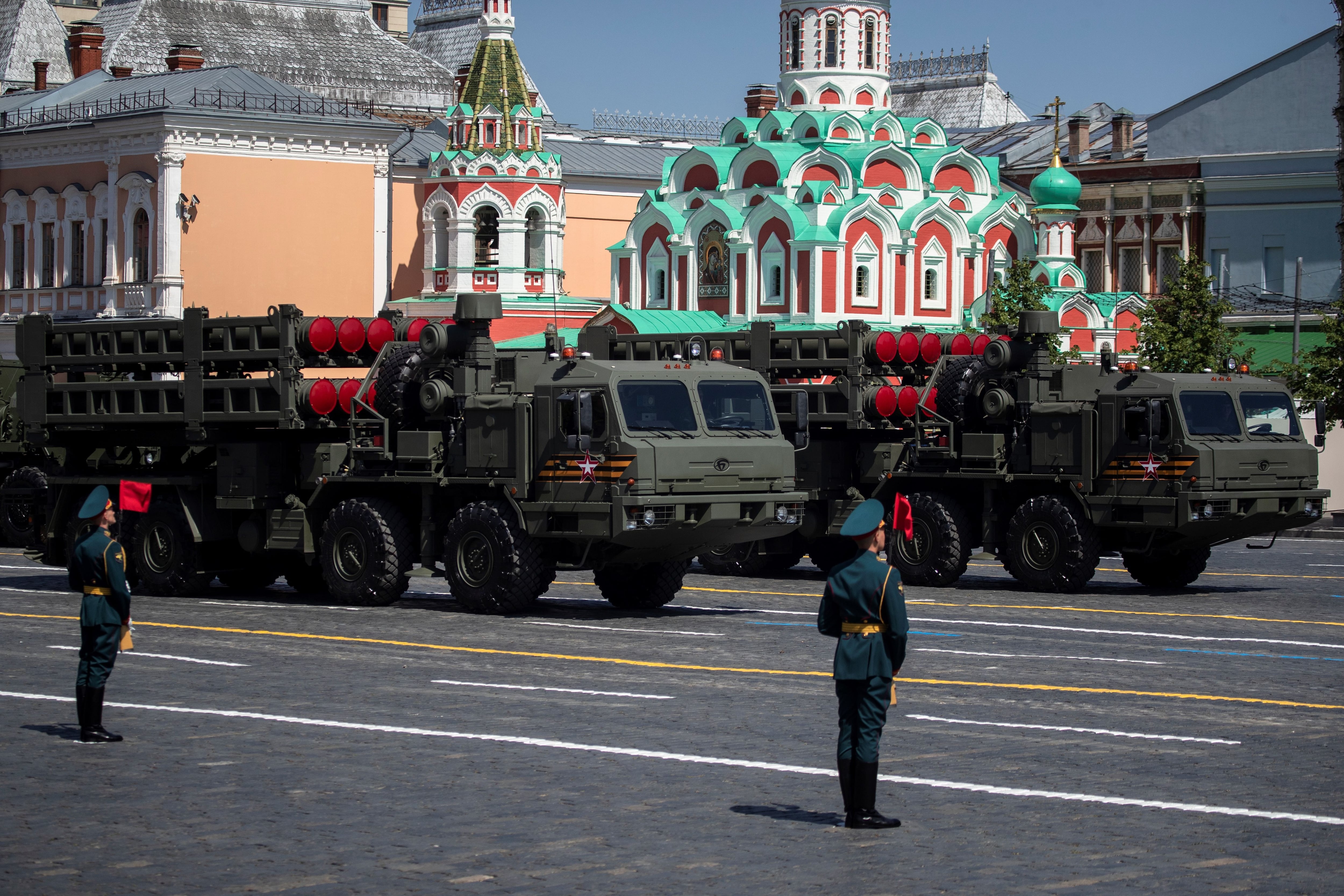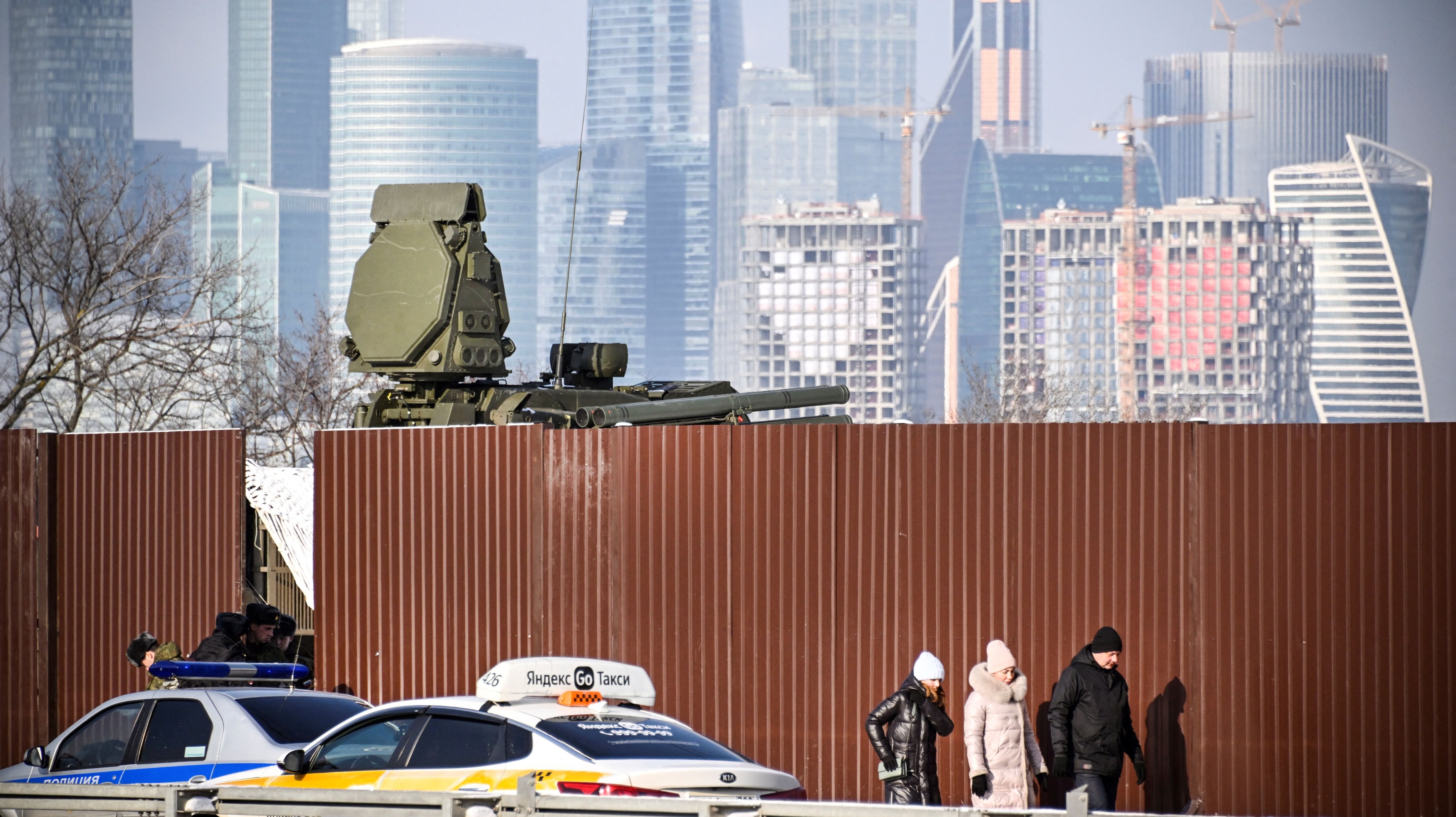Correction: A previous version of this story listed the 15th Aerospace Forces Army when it should have identified the 1st Special Purpose Air and Missile Defense Army. This information has been updated.
MOSCOW — Russia will finish modernizing the missile defense systems protecting its capital by the end of the year, according to Defence Minister Sergei Shoigu.
The announcement comes amid the war in Ukraine, which has entered its second year. And earlier this week, Russia said a Ukrainian drone crashed and caused a fatal explosion in a town 175 kilometers (109 miles) south of Moscow. Ukraine did not immediately comment on the report, while Russia’s Defence Ministry said the drone crashed after an electronic jamming system disabled its navigation.
Russian state-run news agency Tass said authorities identified the drone as a Ukrainian Tu-141. The Soviet-era drone was reintroduced in Ukraine in 2014 and has a range of about 1,000 kilometers.
Shoigu made the announcement about Moscow’s defenses at a board meeting of his ministry this month. In 2023, he said, the country will form an air defense division and brigade, a special-purpose air and missile defense brigade, and an anti-aircraft regiment with the S-350 surface-to-air missile complex.
Developing aerospace defense capabilities has been a major component of Russia’s State Armament Program since 2020. That effort has accounted for about 17.5% of the 3.4 trillion rubles (U.S. $44.3 billion) spent on the program since it began in 2011.
The program is meant to lead to the deployment of 100 battalions, which include 800 launchers made up of the S-400, S-350 and S-500 missile systems. Under the latest iteration of Russia’s State Armament Program, also known as GPV-2027, funds will help with the production of the S-500. The previous iteration, GPV-2020, laid out efforts to create, produce and maintain military equipment.

Currently, Russia’s air and missile defense forces control 1st Air and Missile Defense Army, which defends Moscow and the central industrial district. The 1st Air and Missile Defense Army has regiments equipped with S-300 or S-400 systems, but Shoigu said the force is to receive S-350 weapons.
In total, according to the 2018-2027 timeline for the State Armament Program, Russian forces will receive 12 battalions of the S-350 to replace the S-300. Six S-350 launchers are already in service, but the 1st Air Missile Defense Army has not yet received this weapon.
Regarding the planned special-purpose air and missile defense brigade, Russia will arm the 1st Special Purpose Air and Missile Defense Army with the S-500, which can counter ballistic missiles.
The S-500 has been under development since the early 2000s. In 2011, Russia unveiled plans for two new plants to produce the S-500; they opened in 2016. In 2020, analysts with the Russian military news outlet Avia.pro estimated one S-500 — including launchers, radar, the command post, missiles and technical vehicles — costs $700-800 million.
In 2019, production of the S-500 began for the Aerospace Forces. The Defence Ministry and local company Almaz-Antey signed a contract for the supply of more than 10 S-500s in 2021, with the first delivery expected in 2022. The 1st Special Purpose Air and Missile Defense Army received the first S-500 prototype in 2021, but no delivery took place last year.
Shoigu also said his ministry will put the space control station Razvyazka on combat alert this year. This is a replacement for the Dunai-3U long-range radar station, which was in service from 1978 until the early 2000s. The Dunai-3U is located in the Chekhov district of the Moscow region, where the Razvyazka is based.
The Razvyazka early warning radar will complement the existing Don-2N radar station, which has operated around Moscow since 1989 and received upgrades in recent years.
Russian company Radiofizika said at the MAKS military conference in 2021 the Razvyazka is a P-band radar whose main purpose is cataloging and working with high-orbit space objects. According to the company, about 1 billion rubles went toward developing this radar in 2014.
The State Armament Program is also expected to accomplish the following tasks by 2027:
- The creation of the S-550, an anti-missile and anti-space system with improved detection capabilities and a greater range compared to the S-400 and S-500. The Aerospace Forces are to receive the S-550 by 2025. However, Russia hasn’t announced test launches.
- Designating the A-235 Nudol anti-missile and anti-satellite system as one of the top defense priorities. The ground-based, mobile, non-nuclear system should be capable of hitting objects in orbit at a maximum altitude of 700 kilometers (435 miles). Russia is creating it to replace the Soviet-era A-135 system. The A-235′s 12th test launch took place in December 2022 at the Sary Shagan test site in Kazakhstan.
- Delivering Pantsir S-1 anti-aircraft weapons to Russia’s air and missile defense forces to protect the other systems defending the country. A total of 507 items will be delivered to the Aerospace Forces this year. According to Shoigu, about 85% of the Aerospace Forces’ equipment will be modernized versions by the end of the year.
The Associated Press’ Karl Ritter in Kyiv, Ukraine, and Kirsten Grieshaber in Berlin contributed to this report.
Maxim Starchak is a Russia correspondent for Defense News. He previously worked as an editor for the Russian Defence Ministry and as an expert for the NATO Information Office in Moscow. He has covered Russian nuclear and defense issues for the Atlantic Council, the Center for European Policy Analysis, the Royal United Services Institute and more.








